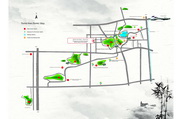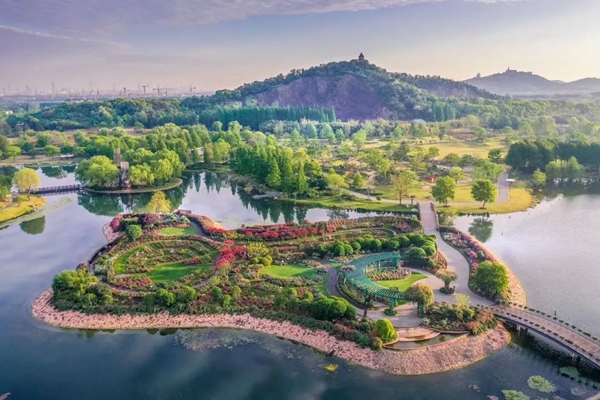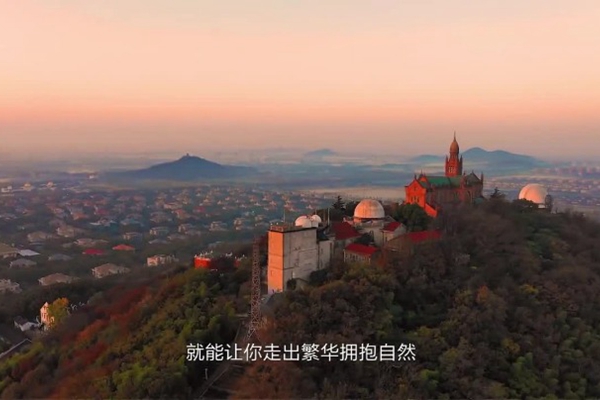
Yaojiajuan Historical Site
( chinadaily.com.cn )
Updated: 2012-05-23
|
|||||||||
The site is in Shanqian village, Xiaokunshan town. In 1980, the mouth of a well was found in the northeast of Yaojiajuan. Later on, many black bricks used for building the well were discovered.
The two ends of each brick have rabbets and rivet holes. The well wall was laid with bricks. Twelve rectangular black bricks are inlaid to form the well curb and tied with two bamboo ropes.
The well bottom was still not seen after it was excavated 4m deep. It is confirmed that the well was dug in Tang Dynasty, but many Neolithic relics were discovered under the brick layer, including incomplete flat-bottom pottery basin, sandwich grey pottery, red pottery pieces and tripod legs in a total of more than 10 articles.
One of them is an exquisite stone adz in good condition. It is a working tool used in the primitive society. To the west of the ancient well, there is a newly dug small river not far from the well.
On the cross section of the bank, an obvious ancient cultural layer was discovered, and many ancient incomplete pottery articles were collected. It is preliminarily determined that there is a large Neolithic historical site around the brick well.
During field investigation, the experts from the Shanghai Cultural Relic Management Committee and Shanghai Museum collected many physical specimens and discovered pottery jars under the category of the Songze Culture.
At the waist of the drum body, there is one circle of exquisite strip pattern. It is confirmed that it was made more than 5,000 years ago. According to the designation principle of historical sites, this site is named the Yaojiajuan Historical Site.
It covers several square kilometers of land. In 1989, the Shanghai Cultural Relic Management Committee made trial excavations of 127 square meters, and unearthed some red pottery and black pottery remains.
In July 1985, the historical site in Yaojiajuan was announced as a heritage site under the protection of Songjiang.
The experts believe the Songze Culture is a primitive culture with productive activities dominated by agriculture and animal husbandry and existing nearly 5,000 years ago. At that time, Shanghai had become a part of the plain of the Yangtze River Delta. The area of the nine peaks was once a hilly region with densely distributed lakes and rivers, and superior natural conditions.
The ancient people built houses in high places, planted crops in the flat land around the mountains. They caught aquatic products in rivers and lakes and hunted beasts in forests. Among agricultural implements, single-hole stone plows appeared.
The agriculture entered the stage of farming by plow from the stage of farming by si (a spade-shaped farm tool). In respect to pottery, the greens were trimmed with a rotary wheel on the basis of manual making and the pottery articles were regular. Cooking adopted tripods with three flat spade-shaped legs.
The handles were finely made and came in various shapes: flat drum and trumpet. The pots and jars mostly have folded shoulders and folded bellies or adopt corrugated bellies. There are also pottery clarifiers, cups, gu (goblet), bottles, spoons and water containers.
Usually, on the surface of these utensils, the patterns of woven rattan and bamboo were decorated or ribbon and arch-shaped red and yellow paint was brushed. On the ring-shaped legs of the utensils, holes formed by triangles with round and concave arc sides were carved.
They have a high decorative effect. People were engaged in agriculture, animal husbandry and handicraft industry. Division of labor in society had taken shape. People had the custom of drinking liquor and the ability of growing paddy, raising pigs, dogs and other livestock and twisting and weaving animal and plant fibers.
According to analysis from on the remains dominated by the Songze Culture -- which were discovered during the trial excavation of the historical sites in Tangcunmiao and Yaojiajuan -- the historical sites basically belong to the period of Songze Culture about 5,000 years ago.
Official Website of the Sheshan National Tourist Resort, Shanghai


